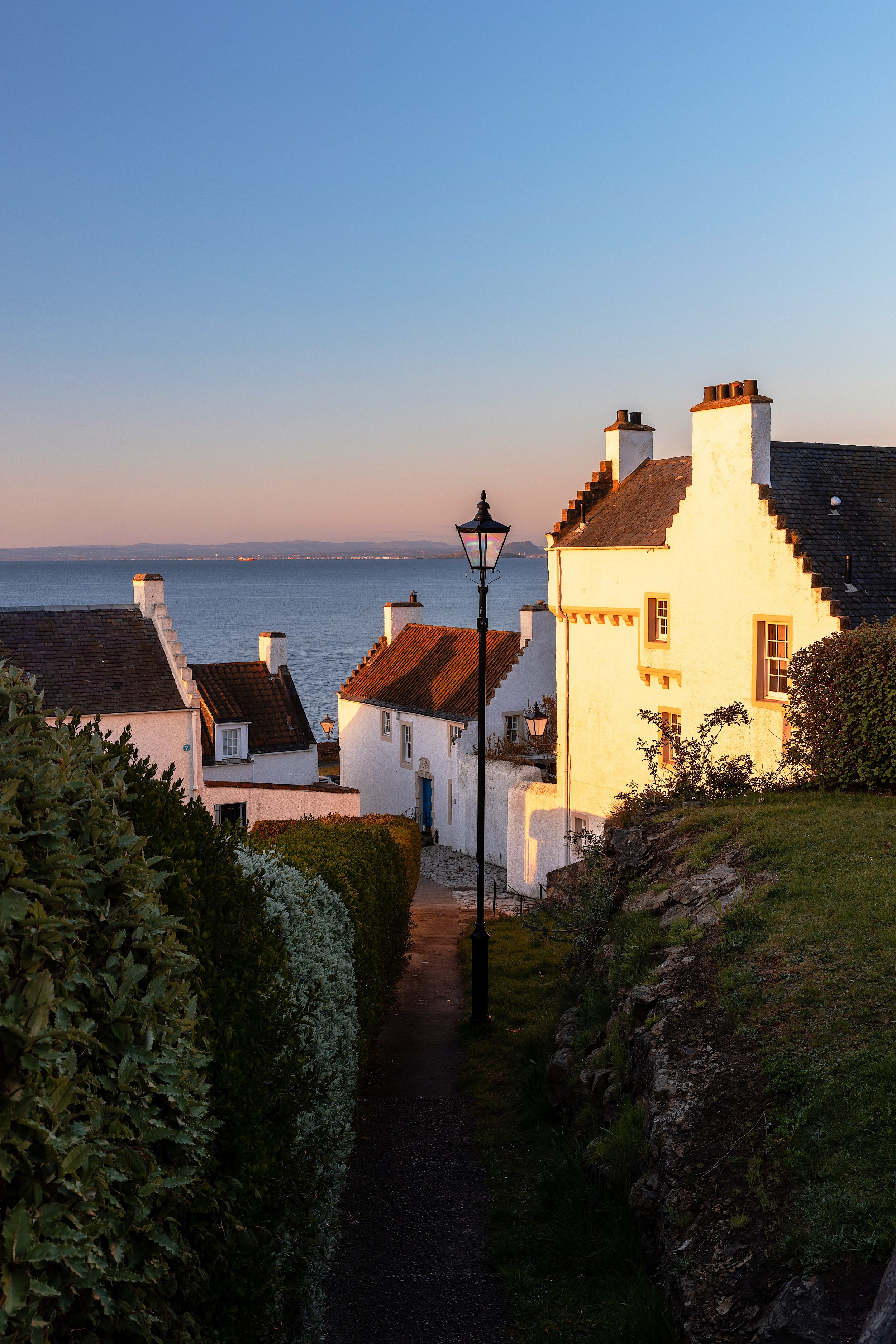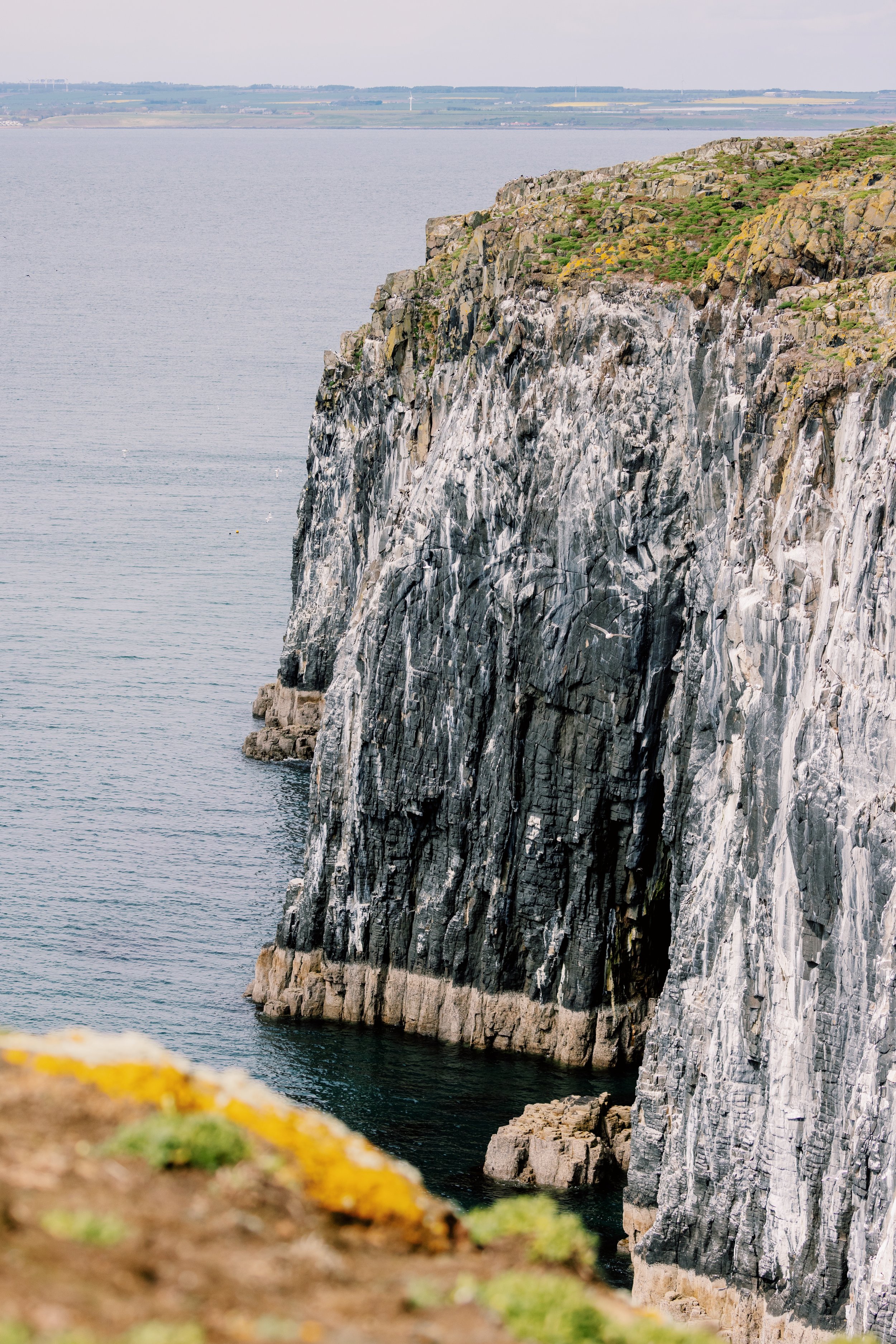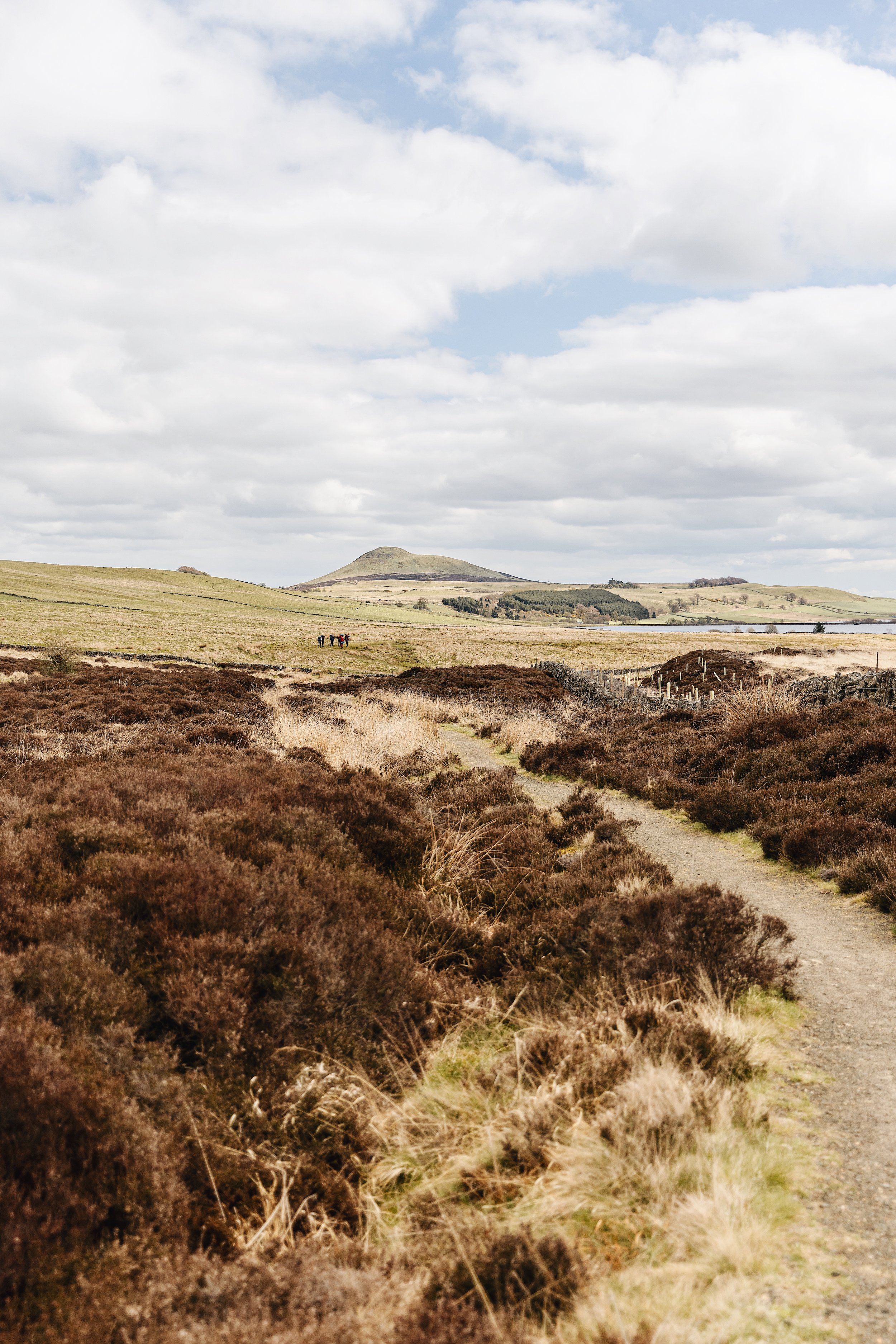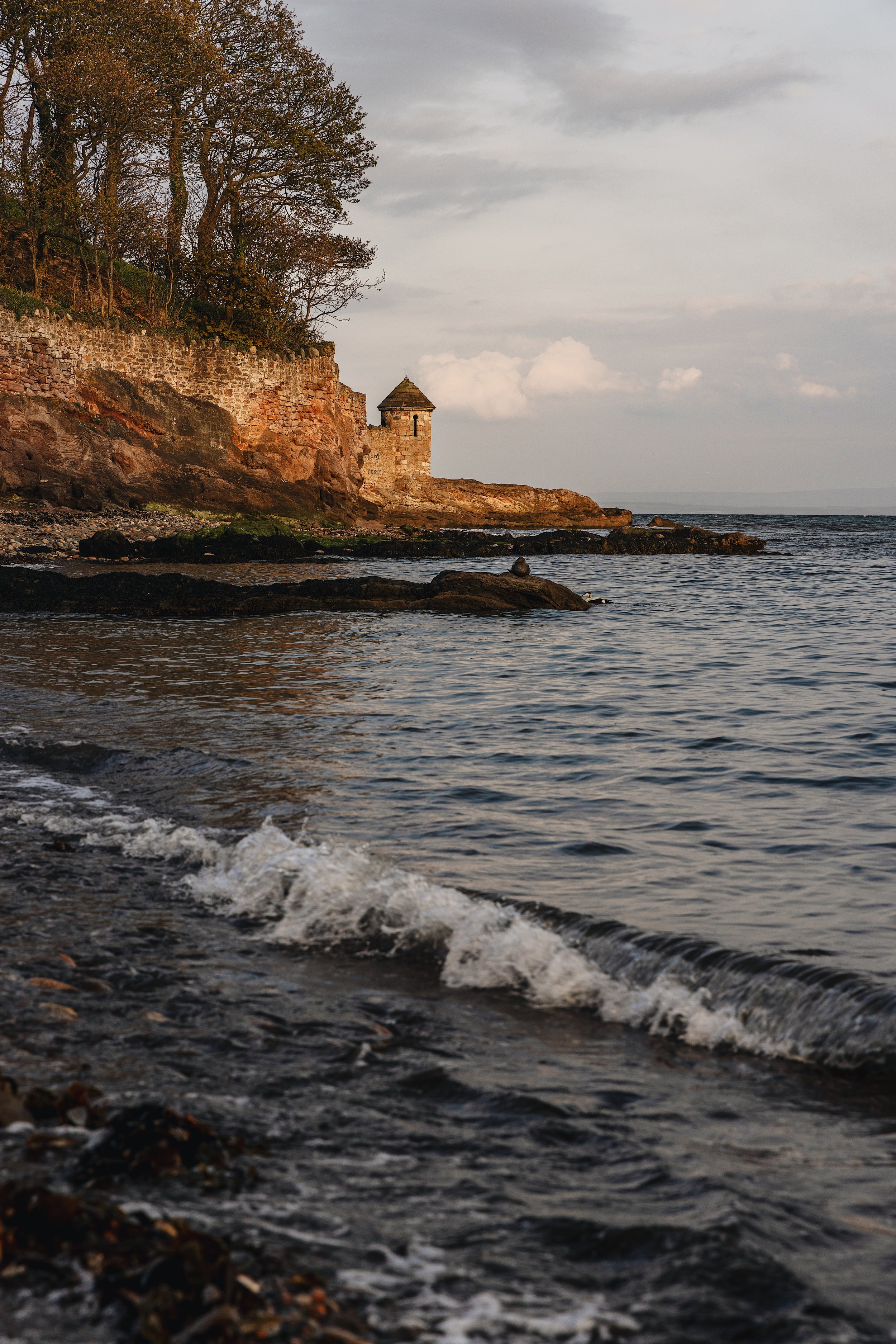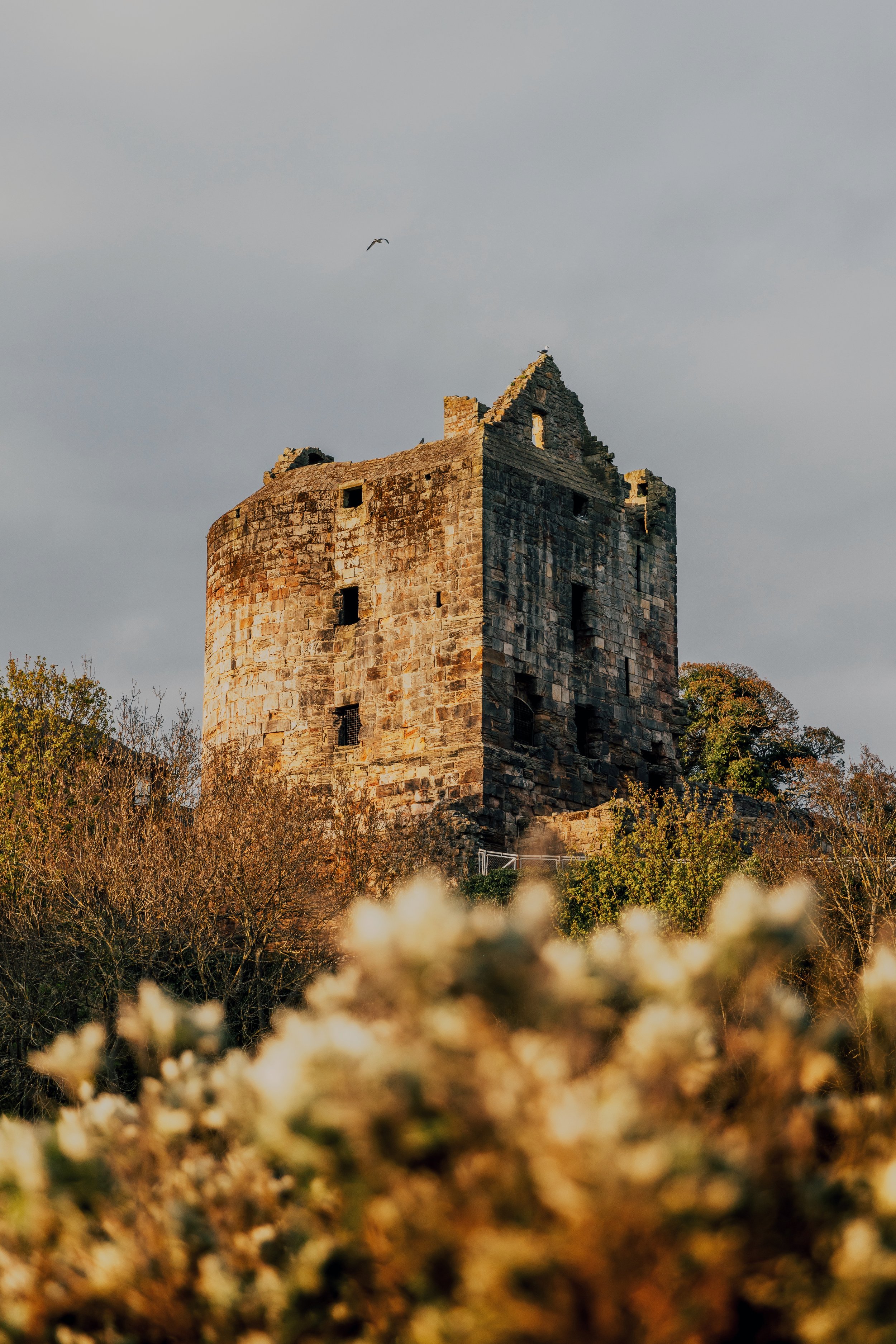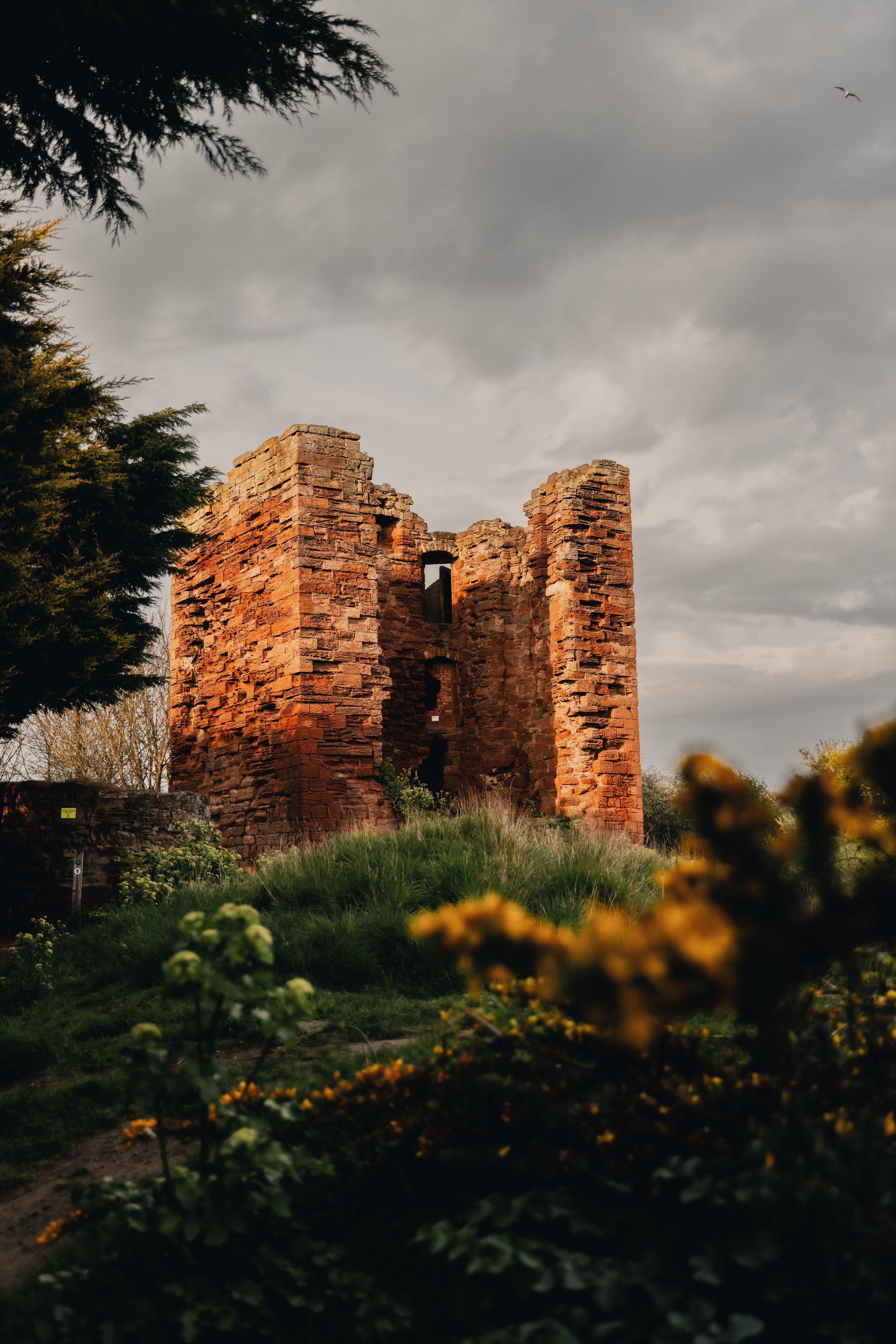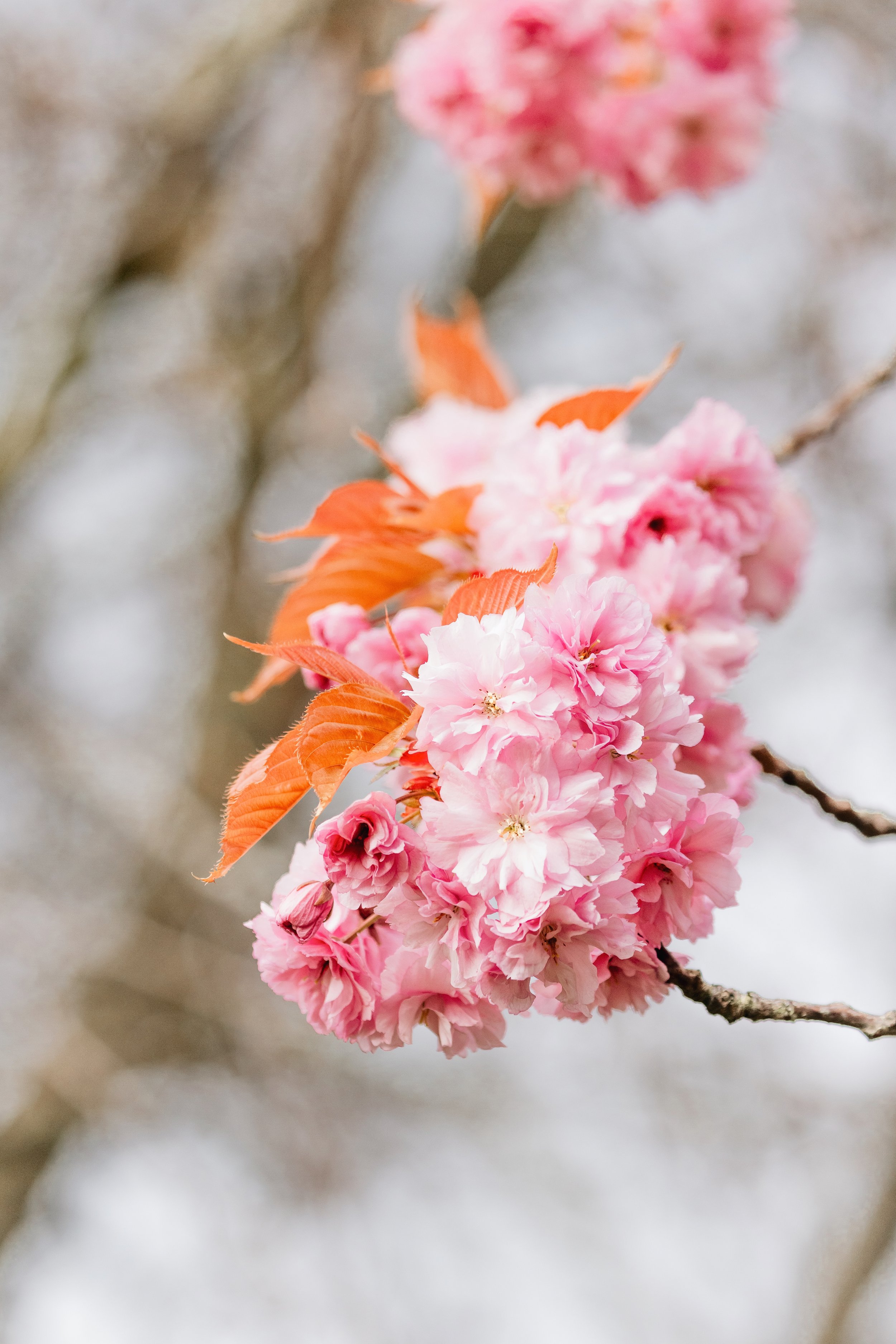Like most of Scotland, the Kingdom of Fife looks at its best during the spring and summer months, making this a lovely time to visit this area. Longer daylight hours give you more time to explore, the woodlands and parks are blanketed with flowers and the seabirds are beginning to return to our coastlines after a long winter at sea.
Read on to find my top five things to do in Fife this spring/summer.
Watch the Sunrise
If you are staying in Fife, setting an alarm for sunrise is a must! My accommodation for this trip was located near the sea in Dysart, it was the perfect spot to watch the sunrise. In fact, the bedroom window faced south east so technically I could have watched the spectacle from bed but, I think you need to get outside to immerse yourself properly in the whole magical experience. That morning I was the only person around and the only sounds I could hear, as the sun gracefully rose out of the North Sea, was the rhythmical lapping of the waves and the mellifluous sound of the dawn chorus. Watching the sunrise really is the best way to start the day.
Take a boat trip to the Isle of May
Sitting at the mouth of the Firth of Forth, around 5 miles off the Fife coast, you’ll find a marvellous little basalt island called the Isle of May. Despite it’s size and remote location the isle has a rich and exciting history which features tales of Vikings, monks, smugglers and lighthouse keepers. Fascinatingly, one of the first Christian churches in Scotland was founded here in the 9th century. People no longer live on this island but up to 200,000 seabirds call this place home during the summer months including up to 90,000 puffins. These comical birds arrive in April to mate and raise their young and leave again in August to spend the next 7 months at sea. You’ll also see Kittiwake, Razorbill, Common Guillemot, European Shag, Northern Fulmar, Eurasian Oystercatcher and Common Eider. Because of the vast amount of seabirds the island has been a National Nature Reserve since the 1950’s.
There are a couple of companies that run boat trips to the Isle of May from Anstruther. We went with Anstruther Pleasure Cruises who run a 5 hour trip, which allows around 3 hours on the island. The crew are super friendly and knowledgeable and tell you all about the island and it’s wildlife. Before setting foot on the island the boat circumvented the island which gave us fantastic views of islands 45 meter cliffs and all the seabirds which call it home.
Once on the island it’s tempting to spend all your time with the puffins but I’d recommend leaving time to check out the priory, which dates back to 13th century, the Stevenson lighthouse and the foghorns which all have remarkable human history attached to them.
Hike in the Lomond Hills
The word ‘Lomond’ derives from the Welsh word ‘Llumon,’ meaning beacon. It’s easy to see how the Lomond hills got their name as they are the highest and most prominent feature of Fife’s landscape. The Lomond Hills are at the centre of the Lomond Hills Regional Park, this park is made of 25 square miles of beautiful moorland, lochs and farmland. The highest hill in the park is West Lomond which stands at 522 meters.
There are multiple routes up West Lomond, we took the one that started from Glen Vale so we could take in the geological features of John Knox’s Pulpit and the Bunnet Stane. There is a car park but spaces are limited and you cannot park on the verge so I would recommend getting there early or later on in the day during peak season. The track starts around 200m from the car park. It’s wide, well trodden and when we visited, lined with vibrantly yellow whin bushes. The ascent is reasonably gentle and after around a mile John Knox’s pulpit is reached. This unique sandstone feature was formed during the late Devonian period, around 410-353 million years ago, when Scotland was located close to the equator. Despite the name, the Scottish church reformer, John Knox is not known to have visited this area. However, a natural amphitheatre is located nearby where Presbyterian Covenanters held covert church services in the late 17th century.
From John Knox’s Pulpit you rejoin the path which eventually reaches the summit of West Lomond. The scenery along the way is beautiful and I imagine the landscape will look absolutely beautiful in late summer with the ground blanketed with heather. Again, the walk is reasonably easy going, it’s only the last 100 meters or so that will get the heart rate up a bit. The summit offers beautiful panoramic views over Fife. On a clear day you can see right across the Firth of Forth to the south and all the way to the mountains of the Highlands in the north.
We didn’t spend long at the summit as there was a bitter wind blowing in from the east but, on a warm day, it would be lovely to stop and have a bite of lunch. Next stop was the Bunnett Stane, it’s a very steep decent for the summit so caution is needed. The rock formation lies in a field at the foot of West Lomond. It’s a pretty remarkable rock formation, made of sandstone and formed over millions of years by ice, rain and wind. The formation kind of looks like a weird, gigantic mushroom measuring around 6m by 3m and almost a meter thick. Hidden away to the side you’ll find a man made cave, like many unusual places in Scotland there is a tragic tale of love and heartbreak attached to the Maidens Bower, which you can read about on location, however, the cave was probably dug out in the 1800’s by a landowner to be used as a bothy or store.
The circular walk was about 5 miles and took us around 2 hours and 45 minutes with breaks. It’s worth while stopping in nearby Falkland for a rest after the walk where there are multiple places for a bite to eat and it’s just a really pretty place filled with history and charm.
Explore the area’s history.
Fife is a history enthusiasts dreams. The county has multiple castles, medieval villages and harbours and tales of Kings, Queens, Vikings and Picts. In fact, this area is regarded as being the location of one of the most important Pictish Kingdoms during the begin of the middle ages, at this point in history it was known as Fib.
One of my favourite things to do is wander around the fishing villages and the meandering lanes within, looking at the dates carved onto the buildings. I think the oldest house I’ve found so far dates back to 1540 and is located in Crail but there are probably many houses dating back further.
If castles take your interest, Fife has plenty to choose from. Two ruined castles worth visiting are Ravenscraig Castle on the outskirts of Kirkcaldy and MacDuff’s Castle in Wemyss.
Ravenscraig Castle was commissioned by James II in 1460 but James died shortly after leaving his widow Queen Mary of Gueldres to continue with its construction. The castle was one of the first in Scotland to be designed to withstand artillery attack. The walls of the castle are 3.5 meters thick in places making it more like a fortress than a castle to protect its royal residents.
Today the castles offers great views across the Firth of Forth and there is a beautiful beach and woodland area nearby which is perfect for a relaxing wander.
Macduff’s Castle hasn’t aged as well as Ravenscraig and a lot of the original structure has succumbed to the elements but it is still worth a visit and has an interesting history attached to it. The castle is located on cliffs above a lovely stretch of coastline which offers lovely sea views. Directly below the castle lie a series of caves carved out by the sea 8000 years ago. These caves are considered some of the most historically important sites in Fife. Residence off the castle would have used the caves but human activity in these caves stretches 1000 years before that. Carved onto the walls are Pictish symbols which are incredibly important as most of Pictish culture has sadly been lost to the mists of time. The carvings are located in a cave known as Jonathon’s cave, which is padlock protected, but you can get a key from one of the local shops to enter. Unfortunately, the shop was shut by the time we arrived so we couldn’t enter the cave.
Photograph the wildflowers.
One of my favourite things about spring/summer is the abundance of wild flowers and Fife puts on a spectacular display. Woodlands are carpeted vibrantly with bluebells and streets and parks lined with trees full of blossom. It’s such a welcome sight after the starkness of winter. I love photographing the blooms, for me it’s like a form of mindfulness and gives me time to slow down, switch off and appreciate nature. If photography isn’t your thing just walking through areas of wild flowers can give you the same feeling.
I hope this has given some inspiration for your summer adventures. Follow me on Instagram for more Scottish adventure inspiration.
This blog is part of a paid partnership with Welcome to Fife.
